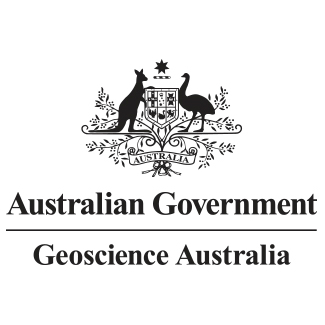Full description
Building on newly acquired airborne electromagnetic and seismic reflection data during the Exploring for the Future (EFTF) program, Geoscience Australia (GA) generated a cover model across the Northern Territory and Queensland, in the Tennant Creek – Mount Isa (TISA) area (Figure 1; between 13.5 and 24.5⁰ S of latitude and 131.5 and 145⁰ E of longitude) (Bonnardot et al., 2020). The cover model provides depth estimates to chronostratigraphic layers, including: Base Cenozoic, Base Mesozoic, Base Paleozoic and Base Neoproterozoic. The depth estimates are based on the interpretation, compilation and integration of borehole, solid geology, reflection seismic, and airborne electromagnetic data, as well as depth to magnetic source estimates. These depth estimates in metres below the surface (relative to the Australian Height Datum) are consistently stored as points in the Estimates of Geophysical and Geological Surfaces (EGGS) database (Matthews et al., 2020).The data points compiled in this data package were extracted from the EGGS database. Preferred depth estimates were selected to ensure regional data consistency and aid the gridding. Two sets of cover depth surfaces (Bonnardot et al., 2020) were generated using different approaches to map megasequence boundaries associated with the Era unconformities:
1) Standard interpolation using a minimum-curvature gridding algorithm that provides minimum misfit where data points exist, and
2) Machine learning approach (Uncover-ML, Wilford et al., 2020) that allows to learn about relationships between datasets and therefore can provide better depth estimates in areas of sparse data points distribution and assess uncertainties.
This data package includes the depth estimates data points compiled and used for gridding each surface, for the Base Cenozoic, Base Mesozoic, Base Paleozoic and Base Neoproterozoic (Figure 1). To provide indicative trends between the depth data points, regional interpolated depth surface grids are also provided for the Base Cenozoic, Base Mesozoic, Base Paleozoic and Base Neoproterozoic. The grids were generated with a standard interpolation algorithm, i.e. minimum-curvature interpolation method. Refined gridding method will be necessary to take into account uncertainties between the various datasets and variable distances between the points.
These surfaces provide a framework to assess the depth and possible spatial extent of resources, including basin-hosted mineral resources, basement-hosted mineral resources, hydrocarbons and groundwater, as well as an input to economic models of the viability of potential resource development.
Lineage
Maintenance and Update Frequency: asNeededNotes
PurposeDelivery of pre-competitve data to the public as part of EFTF program. This data package provides a framework to assess depth and spatial extent of potential resources, including minerals, hydrocarbons and groundwater, as well as an input to economic models of the viability of potential resource development.
Created: 10 07 2020
Issued: 20 07 2020
Data time period: 2020-06-25
text: westlimit=131.50; southlimit=-24.50; eastlimit=145.00; northlimit=-13.50
User Contributed Tags
Login to tag this record with meaningful keywords to make it easier to discover
Metadata (pdf) [683 KB]
uri :
https://d28rz98at9flks.cloudfront.net/130734/130734_00_0.pdf![]()
Interpolated Surfaces (tif) [3.1 MB]
uri :
https://d28rz98at9flks.cloudfront.net/130734/130734_01_0.zip![]()
All Points Lation (csv) [4.6 MB]
uri :
https://d28rz98at9flks.cloudfront.net/130734/130734_02_0.zip![]()
Estimates of Geological and Geophysical Surfaces Web Map Service (Estimates of Geological and Geophysical Surfaces WMS)
uri :
https://services.ga.gov.au/gis/eggs/wms![]()
Estimates of Geological and Geophysical Surfaces Web Coverage Service (Estimates of Geological and Geophysical Surfaces WCS)
uri :
https://services.ga.gov.au/gis/eggs/wcs![]()
Estimates of Geological and Geophysical Surfaces WMS
local : 126340
Estimates of Geological and Geophysical Surfaces WCS
local : 145663
- global : f93194e1-7f62-46b0-80f1-6ca359edb81e
- Local : pid.geoscience.gov.au/dataset/ga/130734
- DOI : 10.26186/130734



